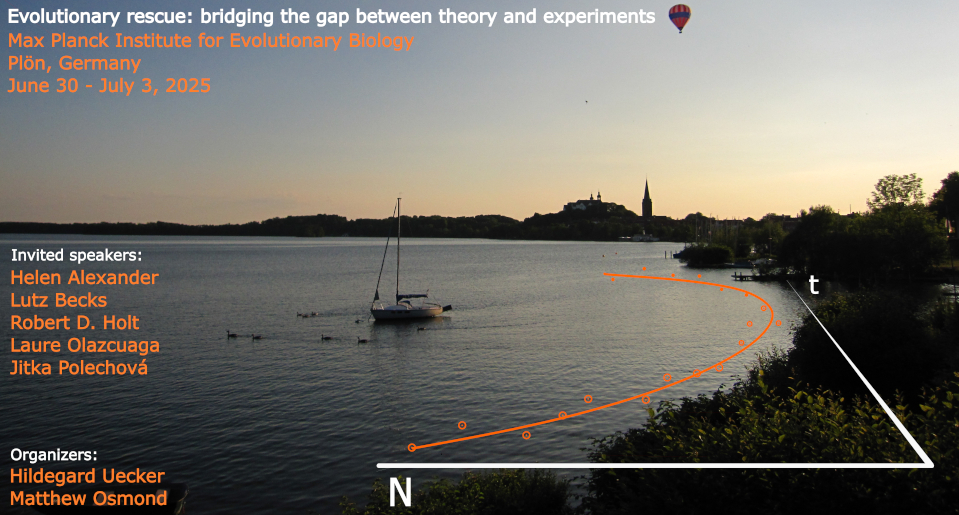Speaker
Description
Evolution of fungicide resistance in pathogens of crop plants is a prime example of rapid adaptation; and this problem is in many ways similar to evolutionary rescue scenarios. Fungicide resistance causes significant economic losses to crop production that are however difficult to estimate [Mikaberidze et al., 2025]. Fungicides are often applied as mixtures of two components belonging to different modes of action. This exerts a directional selection for pathogen strains resistant to both components of the mixture (double resistance). Since, many important fungal pathogens of crop plants undergo ample sexual reproduction, sexual recombination may accelerate the emergence of double resistance by bringing together mutations conferring resistance to each of the individual components of the mixture. Sex has been previously found to speed up adaptation of yeast populations in vitro [McDonald et al., 2016]. Does a similar effect occur in populations of crop pathogens exposed to fungicide mixtures? To address this question, we formulated a stochastic eco-evolutionary simulation model of pathogen populations that incorporates sexual reproduction and parameterized it for Zymoseptoria tritici, an important fungal pathogen that causes septoria tritici blotch on wheat. According to our model, sex does speed up emergence of double resistance when both single resistant types pre-exist in the population. This happens across wide ranges of strengths of selection and mutation rates. However, when double resistance evolves from a fully sensitive population, sex can speed up emergence of double resistance only over limited ranges of parameters. To gain a deeper insight, we adapted an approximate analytical theory that we devised previously using a combination of a deterministic susceptible-infected-removed model and a stochastic birth-death process [Mikaberidze et al., 2017] to describe these effects and compared the outcomes to full stochastic simulations. We found that in this scenario sex can speed up emergence of double resistance under sufficiently weak selection and for pathogens with sufficiently high basic reproduction numbers; and this parameter range is relevant for typical crop protection scenarios in agroecosystems. Thus, fungicide mixtures alone may prove to be an inappropriate long-term strategy to control crop diseases caused by sexually-reproducing pathogens.
McDonald, M., Rice, D., Desai, M. 2016 Sex speeds adaptation by altering the dynamics of molecular evolution. Nature, 531, 233–236. https://doi.org/10.1038/nature17143
Mikaberidze, A., Gokhale, C.S., Bargues-Ribera, M., Verma P. 2025 The cost of fungicide resistance evolution in multi-field plant epidemics. bioRxiv pre-print https://doi.org/10.1101/2023.09.05.556392
Mikaberidze, A., Paveley, N., Bonhoeffer, S., van den Bosch, F., 2017 Emergence of fungicide resistance: the role of fungicide dose. Phytopathology, 107, 1–16. https://doi.org/10.1094/phyto-08-16-0297-r

